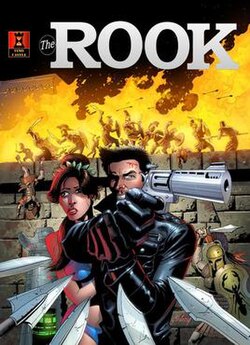
Richard Corben was an American illustrator and comic book artist best known for his comics featured in Heavy Metal magazine, especially the Den series which was featured in the magazine's first film adaptation in 1981. He was the winner of the 2009 Spectrum Grand Master Award and the 2018 Grand Prix at Angoulême. In 2012 he was elected to the Will Eisner Award Hall of Fame.
Harris Publications Inc. was an American special interest media company, operating over 75 brands with print, digital, mobile and live event platforms prior to its sale to Athlon Media in 2016. It produced magazines that educate, entertain, inform and inspire. Subject matters spanned an array of interests including decorating, gardening, beauty, automotive, entrepreneurship and small business, sports, outdoor living, history, tactical, entertainment and wellness. Harris' titles covered a variety of markets and focused on niche special interests, primarily in the United States.
Douglas Moench is an American comic book writer notable for his Batman work and as the creator of Moon Knight, Deathlok, Black Mask, Harvey Bullock, Electric Warrior, and Six from Sirius. He is also known for his critically acclaimed eight-year run on Master of Kung Fu.
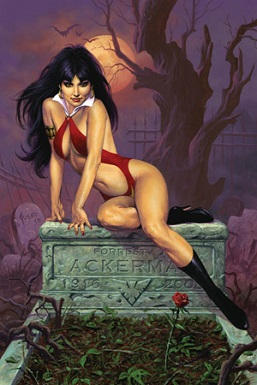
Vampirella is a vampire superheroine created by Forrest J Ackerman and comic book artist Trina Robbins in Warren Publishing's black-and-white horror comics magazine Vampirella #1, a sister publication of Creepy and Eerie.
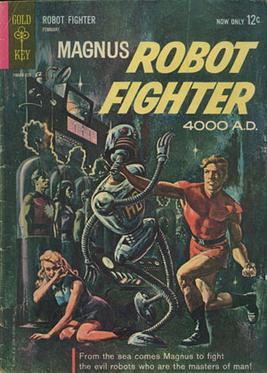
Magnus, Robot Fighter is a fictional superhero who battles rogue robots in the year 4000, appearing in comic books created by writer/artist Russ Manning in 1963. Magnus first appeared in Magnus Robot Fighter 4000 A.D. #1, published by Gold Key Comics in February 1963. The character was subsequently published by Valiant Comics and Acclaim Comics in the 1990s, and was reintroduced by Dark Horse Comics in August 2010. Some aspects of the concept have varied with each publisher.

Paul Gulacy is an American comics artist best known for his work for DC Comics and Marvel Comics, and for drawing one of the first graphic novels, Eclipse Enterprises' 1978 Sabre: Slow Fade of an Endangered Species, with writer Don McGregor. He is most associated with Marvel's 1970s martial-arts and espionage series Master of Kung Fu.
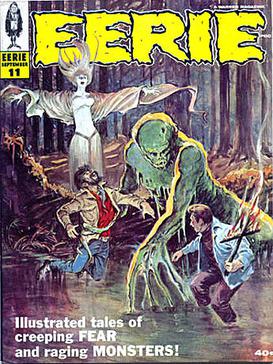
Eerie was an American magazine of horror comics introduced in 1966 by Warren Publishing. Like Mad, it was a black-and-white magazine intended for newsstand distribution and did not submit its stories to the comic book industry's voluntary Comics Code Authority. Each issue's stories were introduced by the host character, Cousin Eerie. Its sister publications were Creepy and Vampirella.

Arthur Adams is an American comic book artist and writer. He first broke into the American comic book industry with the 1985 Marvel Comics miniseries Longshot. His subsequent interior comics work includes a number of Marvel's major books, including The Uncanny X-Men, Excalibur, X-Factor, Fantastic Four, Hulk, and Ultimate Comics: X, as well as books by various other publishers, such as Action Comics, Vampirella, The Rocketeer, and The Authority. Adams has also illustrated books featuring characters for which he has a personal love, such as Godzilla, the Creature from the Black Lagoon, and Gumby, the latter of which garnered him a 1988 Eisner Award for Best Single Issue.
Esteban Maroto is a Spanish comic book artist.
Warren Publishing was an American magazine company founded by James Warren, who published his first magazines in 1957 and continued in the business for decades. Magazines published by Warren include After Hours, Creepy, Eerie, Famous Monsters of Filmland, Help!, and Vampirella.
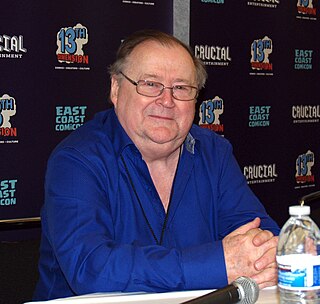
Donald Francis McGregor is an American comic book writer best known for his work for Marvel Comics; he is the author of one of the first graphic novels.

Creepy was an American horror comics magazine launched by Warren Publishing in 1964. Like Mad, it was a black-and-white newsstand publication in a magazine format and did not carry the seal of the Comics Code Authority. An anthology magazine, it initially was published quarterly but later went bimonthly. Each issue's stories were introduced by the host character, Uncle Creepy. Its sister publications were Eerie and Vampirella.
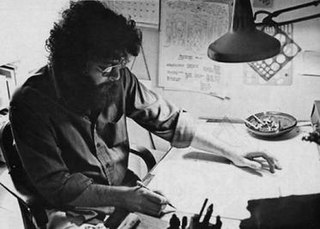
Thomas F. Sutton was an American comic book artist who sometimes used the pseudonyms Sean Todd and Dementia. He is best known for his contributions to Marvel Comics and Warren Publishing's line of black-and-white horror-comics magazines, particularly as the first story-artist of the popular character Vampirella.
Fernando Fernández was a Spanish comic book artist.

Josep Maria Beà i Font, in Spanish José Beá is a Spanish comic book artist.
William Bryan Dubay, also known by the pseudonyms Will Richardson, and Dube, was an American comic-book editor, writer and artist best known as editor and writer for Warren Publishing, including that company's horror-comics magazines Creepy, Eerie and Vampirella.
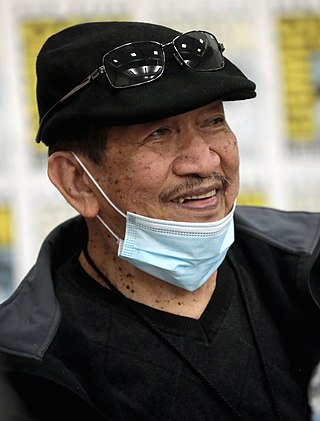
Alex Niño is a Filipino comics artist best known for his work for the American publishers DC Comics, Marvel Comics, and Warren Publishing, and in Heavy Metal magazine.
Bob Larkin is an American comics artist primarily known for his painted covers for Marvel Comics' magazine-format titles Marvel Magazines in the 1970s and early 1980s and for his 32 painted covers on the Bantam Books paperback reissues series of the Doc Savage pulp novels.

Michael W. Royer is an American comics artist and inker, best known for his work with pencilers Russ Manning and Jack Kirby. In later life Royer became a freelance product designer and character artist for The Walt Disney Company.

Rodolfo D. Nebres is a Filipino comics artist who has worked mostly as an inker in the American comic book industry. Known for his lush, detailed inklines, Nebres' most prolific period was in the late 1970s and the 1980s.
